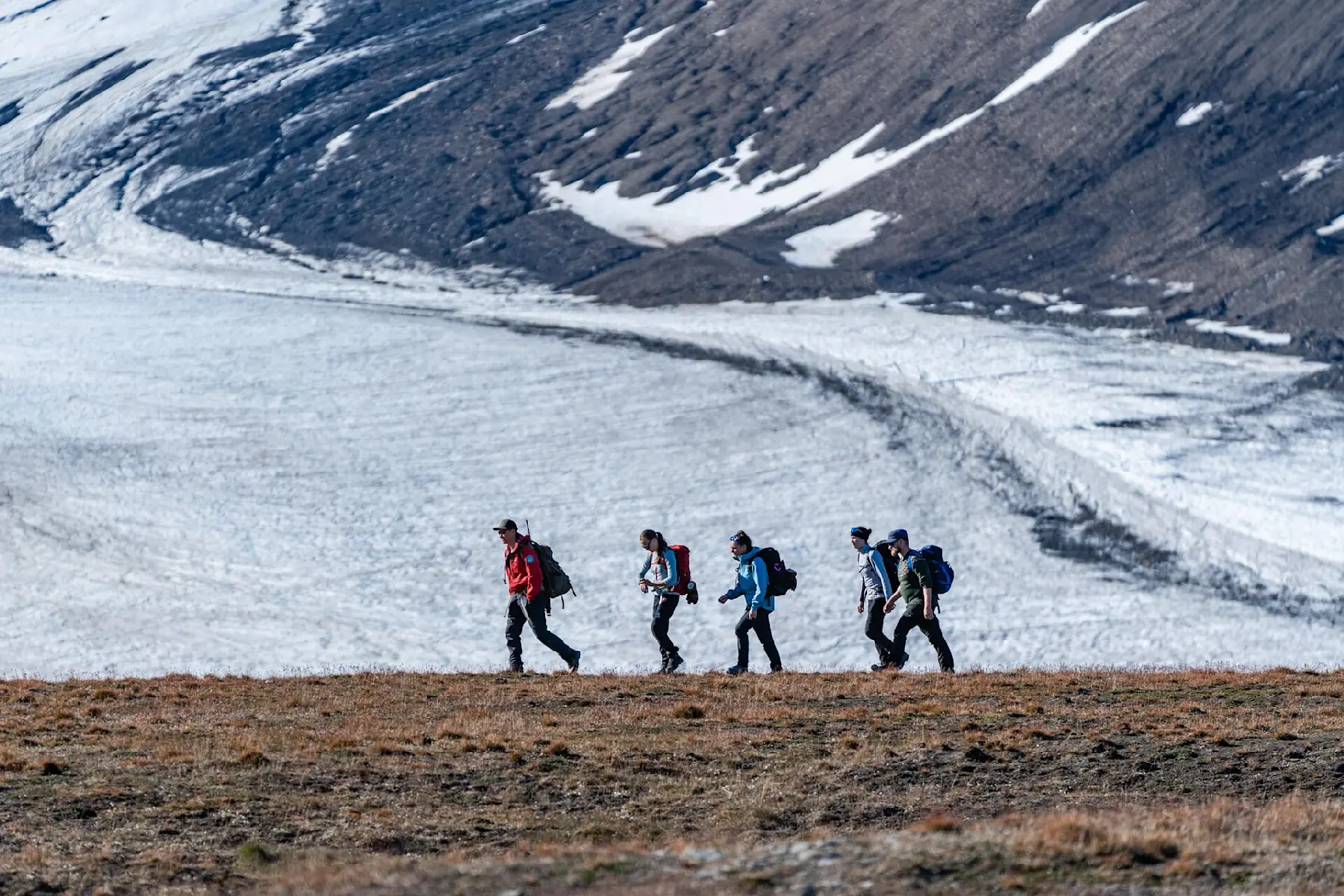
About Svalbard
The last stop before the North Pole, formerly an Arctic outpost, now an exotic tourist destination. Here are some central facts about Svalbard!
Geography
Svalbard is a Norwegian archipelago in the Arctic, located approximately half way between mainland Norway and the North Pole, between 74° and 81° North. The archipelago is made up of islands, islets and reefs, with Spitsbergen as the largest island. The glaciers of Svalbard cover 36 502 km² or around 60% of the archipelago, while 30% is covered with bare mountains and 10% with vegetation. The largest glacier is Austfonna (8 412 km²) on Nordaustlandet. The landscape of Svalbard has been formed by a series of ice ages, when great glaciers cut the original plateau up into fjords, valleys and mountains. The two highest mountains on Svalbard are Newtontoppen (1 713 m) and Perriertoppen (1 712 m). The longest fjord is Wijdefjorden (108 km).
Wildlife
Polar bears are probably the animal that most people connect with Svalbard, but there are many other animals that call Svalbard home: walruses, harp seals, ring seals, bearded seals, belugas, bowhead whales, narwhals, Svalbard grouse, polar fox and Svalbard reindeer – to mention a few. The Svalbard reindeer is genetically distinct from other species of reindeer, with short legs and a fat layer that can be 10 cm thick. The sea around Svalbard is rich in nutrients, and during the summer large numbers of sea birds flock to the archipelago. There are seven national parks and 23 nature reserves, which combined cover two thirds of the archipelago. This helps to protect the untouched and incredibly fragile ecosystem found on Svalbard.
Midnight sun, climate and temperatures
The archipelago has an Arctic climate but can experience a much higher average temperature than other areas at the same latitude, due to regular low pressure systems and the warm Atlantic Ocean currents. Today, the fjords on the west of Spitsbergen are ice-free during much of the winter, but if you meet people who were here back in the day, they may tell stories of reaching Pyramiden and Barentsburg on foot over the ice.
The average temperature is -16 degrees Celsius in January, and +6 in July, and there is generally little precipitation in Longyearbyen, although we can get a fair bit of stormy weather. At the coast, the permafrost layer reaches 100 metres below ground; during the summer, it is only the first metre that melts. The polar night and the midnight sun rule the skies for much of the year, adding an exotic touch to your wilderness experiences. Longyearbyen experiences the midnight sun from April 20 to August 23, and the dark season between October 26 and February 15.
Inhabitants
Svalbard is home to approximately 2,650 people, with most residing in Longyearbyen, the administrative centre of the archipelago. Other settlements include international research stations in Ny-Ålesund and Hornsund, as well as meteorological stations on Bjørnøya (Bear Island) and Hopen. Additionally, there is a Russian community in Barentsburg and a small number of residents in Pyramiden. All settlements, except for the stations on Bjørnøya and Hopen, are located on Spitsbergen, the largest island on the archipelago.
Longyearbyen itself is home to around 2,100 people, representing over 50 nationalities, although the majority are Norwegian. The population on Svalbard is notably young compared to mainland Norway, with a significantly higher proportion of residents aged 25–49. Very few inhabitants are over the age of 70, reflecting the unique and dynamic demographic of this Arctic community.
Coal industry
In 1610, coal was discovered on Svalbard, but it wasn’t before 1899 that Søren Zachariassen dug out 60 tonnes of coal on Bohemannsflya and sold it on the streets of Tromsø for 1 kroner per barrel. He wasn’t able to raise the capital required to start commercial mining, but in 1906 the American, John Munro Longyear, open Mine 1 in Longyearbyen, known today as the American mine. The year after, the first coal was sent down to the mainland, and with that the mining period which was to last over 100 years had begun. However, it was not easy to run a coal mine on Svalbard from North America, especially given Svalbard is completely isolated from the rest of the world half of the year. In 1916, Longyear sold his coal company to Store Norske Spitsbergen Kullkompani A/S. Of all the mining projects on Svalbard, only coal mining has been long term and profitable. Store Norske still runs Mine 7 today.
Tourism on Svalbard
Tourism has been on Svalbard at least as long as the mining industry. The first tourists who came to Svalbard were rich Europeans who came to hunt, and often wrote books about their experiences. These reports created interest, and paved the way for cruise tourism to the archipelago. In 1896, three years after he established Vesteraalens Dampskibselskap (which later became Hurtigruten), Richard With started the Sportsman’s Route, which was a voyage from Hammerfest to Svalbard.
The same year, the company built a hotel with accommodations for 30 guests. This building was burnt down by the Germans in 1943, but had already laid the foundations for tourism in Longyearbyen. Commercial tourism began in the beginning of the 1900s, and since its small beginnings the industry has been growing over 100 years. Today, 450-500 people work in the travel industry, and it is one of the three main industries on Svalbard.